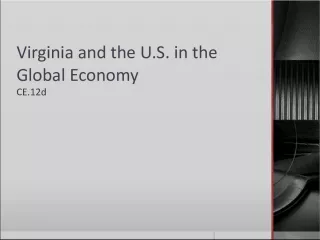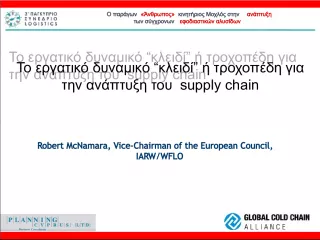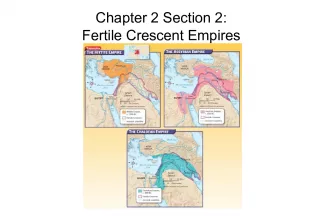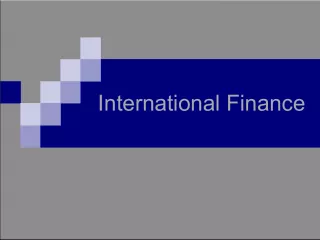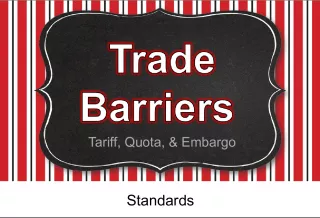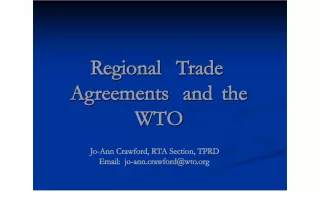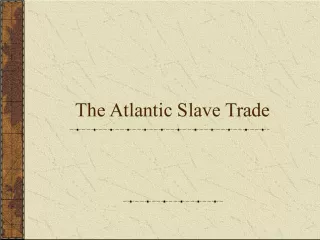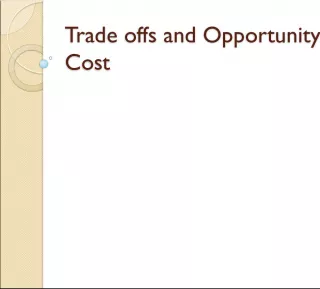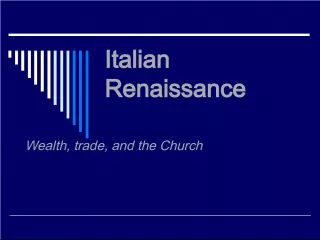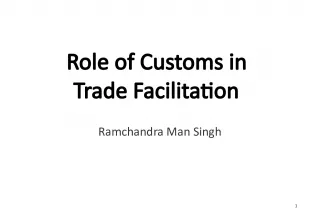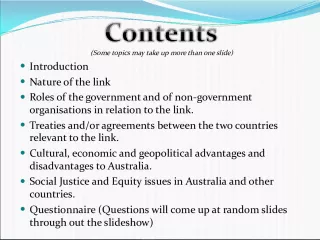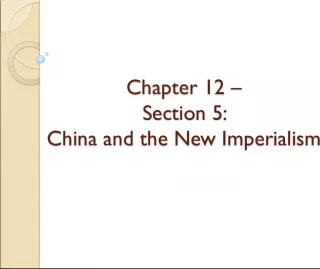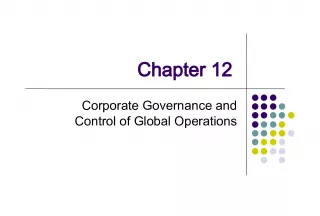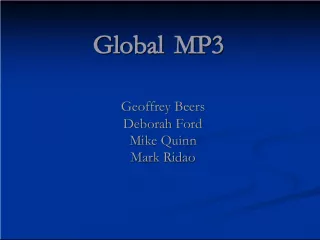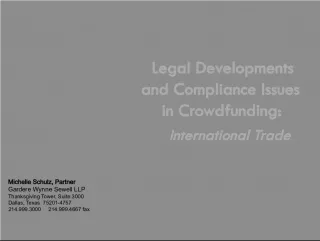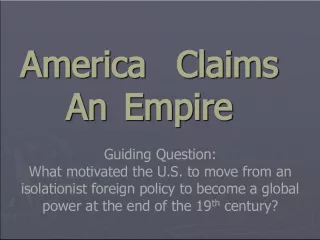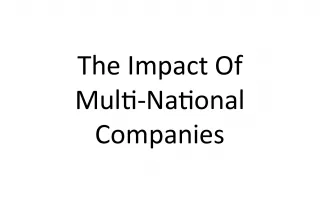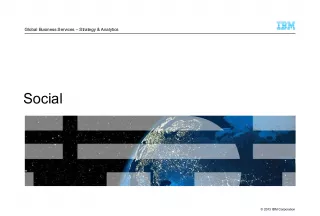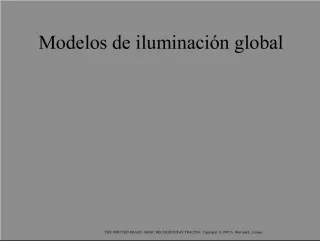Global Trade and Empires
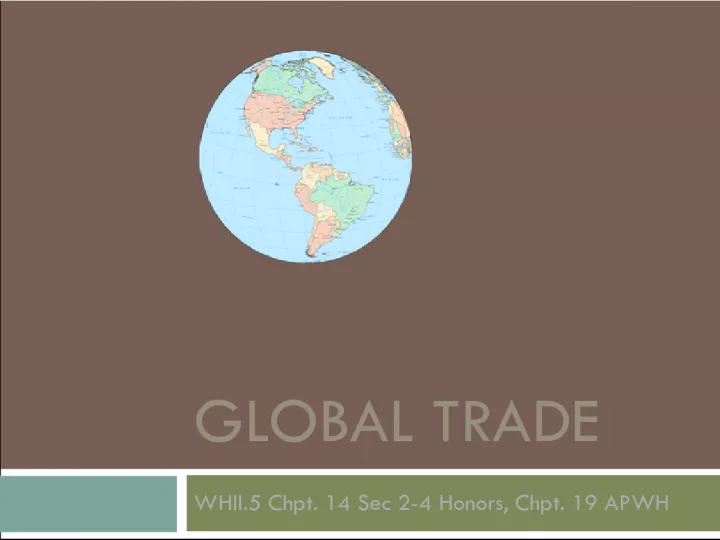

In this lesson, we will be studying the Ottoman Empire, India's coastal trade, the Mughal Empire, East Asia including China and the Japanese Shogunate, Africa and its global trade involvement
- Uploaded on | 2 Views
-
 isabelpitz
isabelpitz
About Global Trade and Empires
PowerPoint presentation about 'Global Trade and Empires'. This presentation describes the topic on In this lesson, we will be studying the Ottoman Empire, India's coastal trade, the Mughal Empire, East Asia including China and the Japanese Shogunate, Africa and its global trade involvement. The key topics included in this slideshow are . Download this presentation absolutely free.
Presentation Transcript
Slide1GLOBAL TRADEWHII.5 Chpt. 14 Sec 2-4 Honors, Chpt. 19 APWH
Slide2Standard WHII.5 You will be able to describe… and locate the Ottoman Empire India, coastal trade, and the Mughal Empire East Asia, including China & Japanese Shogunate Africa and its global trade involvement the growth of European nations, Commercial Revolution and mercantilism
Slide3I. Ottoman Empire The Ottoman Empire emerged as a political and economic power following the conquest of Constantinople (the capital of the Christian Byzantine Empire).
Slide4I. Ottoman Empire The Ottomans also brought much of the Muslim territory in Southwest Asia and North Africa under their rule.
Slide5I. Ottoman Empire The Ottoman Empire also spread into the Balkan Peninsula and Eastern Europe, and brought the Islamic religion with them. This planted the seeds for many modern conflicts between Christians and Muslims.
Slide6I. Ottoman Empire Original Location of the Ottoman Empire Asia Minor Modern-day Turkey
Slide7I. Ottoman Empire Expansion & extent of Ottoman Empire Southwest Asia Southeastern Europe Balkan Peninsula North Africa
Slide8I. Ottoman Empire Development of the Ottoman Empire Capital at Constantinople → renamed Istanbul Islamic religion as unifying force that accepted other religions Trade in coffee & ceramics
Slide9II. The Mughal Empire 1526 Descendants of the Mongols, the Muslim Mughal (Mogul) rulers established an empire in northern India. (Babar) 1526 Akbar the Great , Jahangir and Nur Jahan Shah Jahan ( wife Mumtaz Jahal) The Mughal empire traded with European nations.
Slide10II. The Mughal Empire Although India was originally Hindu, the Mughal invasion introduced Islam to the region. The Taj Mahal is an example of how Islam impacted India’s architecture.
Slide11II. The Mughal Empire Location of the Mughal Empire North India
Slide12II. The Mughal Empire Contributions of the Mughal rulers Spread of Islam into India Art & architecture – Taj Mahal Arrival of European trading outposts Southern India (independent) traded silks, spices, and gems.
Slide13II. The Mughal Empire Trade with European nations Portugal, England and the Netherlands competed for Indian Ocean trade by establishing coastal ports on the Indian sub-continent.
Slide14III. China & Japan China & Japan sought to limit the influence and activities of European merchants. Found European goods to be inferior Forced European to trade in gold or silver only China & Japan remained relatively isolated from the rest of the world for the next 400 years.
Slide15III. China & Japan China Creation of foreign enclaves to control trade (Canton) Imperial policy of controlling foreign influences & trade Increase in European demand for Chinese goods
Slide16III. China & Japan Japan Government → powerless emperor ruled by a military leader (shogun) Shinto was the major religion of Japan Adopted a policy of isolation to limit foreign influence
Slide17IV. Africa The exportation of slaves and demand for imported goods began to alter traditional patterns in Africa.
Slide18IV. Africa African Exports : Slaves (triangular trade – Middle Passage) Raw materials African Imports : Manufactured goods from Europe, Asia and the Americas New food products (corn, peanuts)
Slide19V. Economics European maritime nations competed for overseas markets, colonies and resources, creating new economic practices, such as mercantilism, linking European nations with their colonies.
Slide20V. Economics Mercantilism An economic practice adopted by European colonial powers in an effort to become self-sufficient Based on the theory that colonies existed for the benefit of the mother country
Slide21V. Economics Commercial Revolution European maritime nations competed for overseas markets, colonies and resources A new economic system emerged: New money & banking systems were created Economic practices such as mercantilism evolved Colonial economies were limited by the economic needs of the mother country
Slide22Knowledge Check Where was the Ottoman Empire located, and how did it expand? How did the expansion of the Ottoman Empire impact world trade? Who was Akbar the Great? What were some of his accomplishments during his reign? Explain the impact of English trade on the Mughal Empire. Briefly explain China, Japan and Korea’s interaction with Europe during the Age of Exploration. (Use Chapt 19 in your text (AP) Chapt 14 Honors
